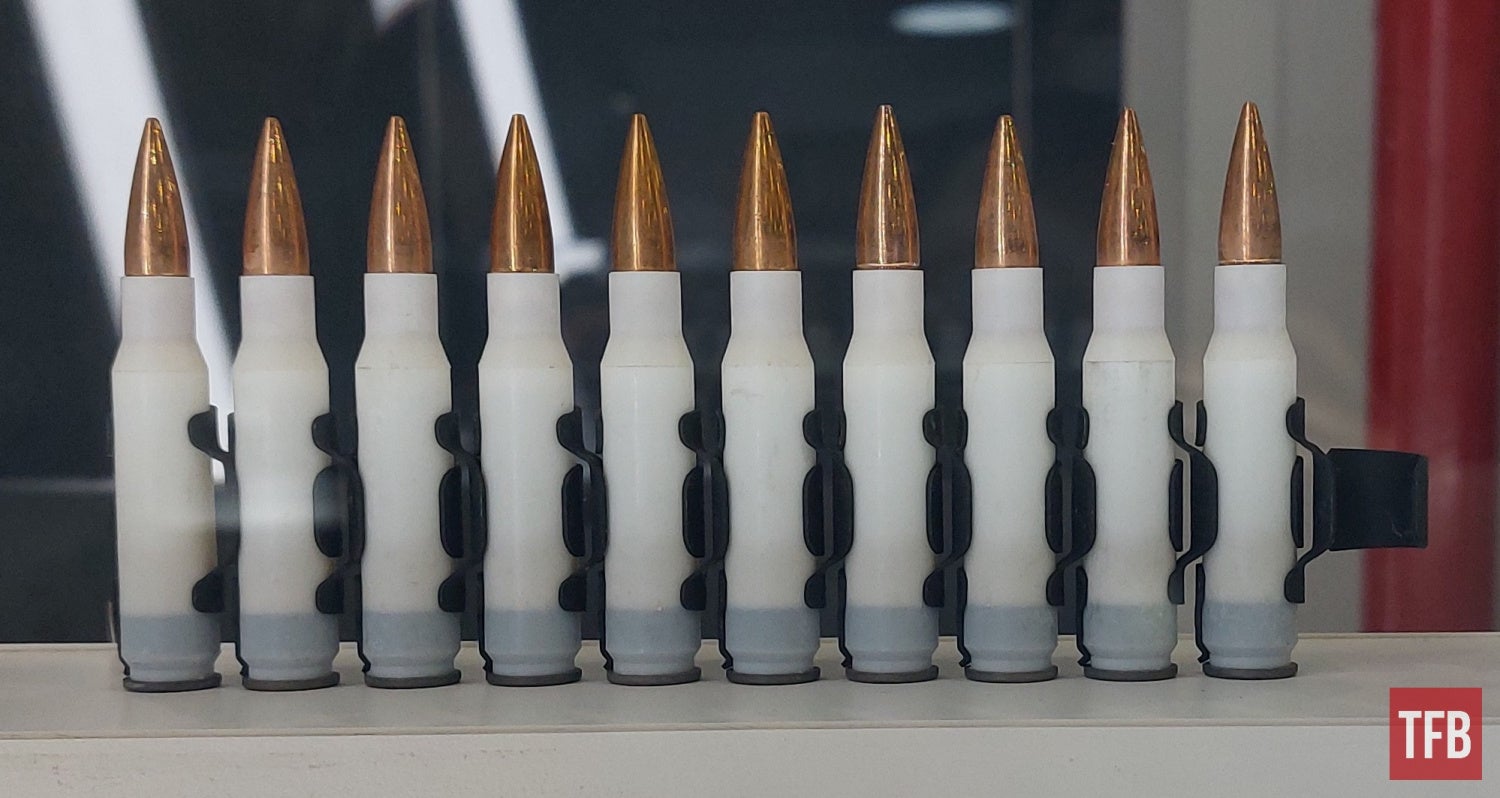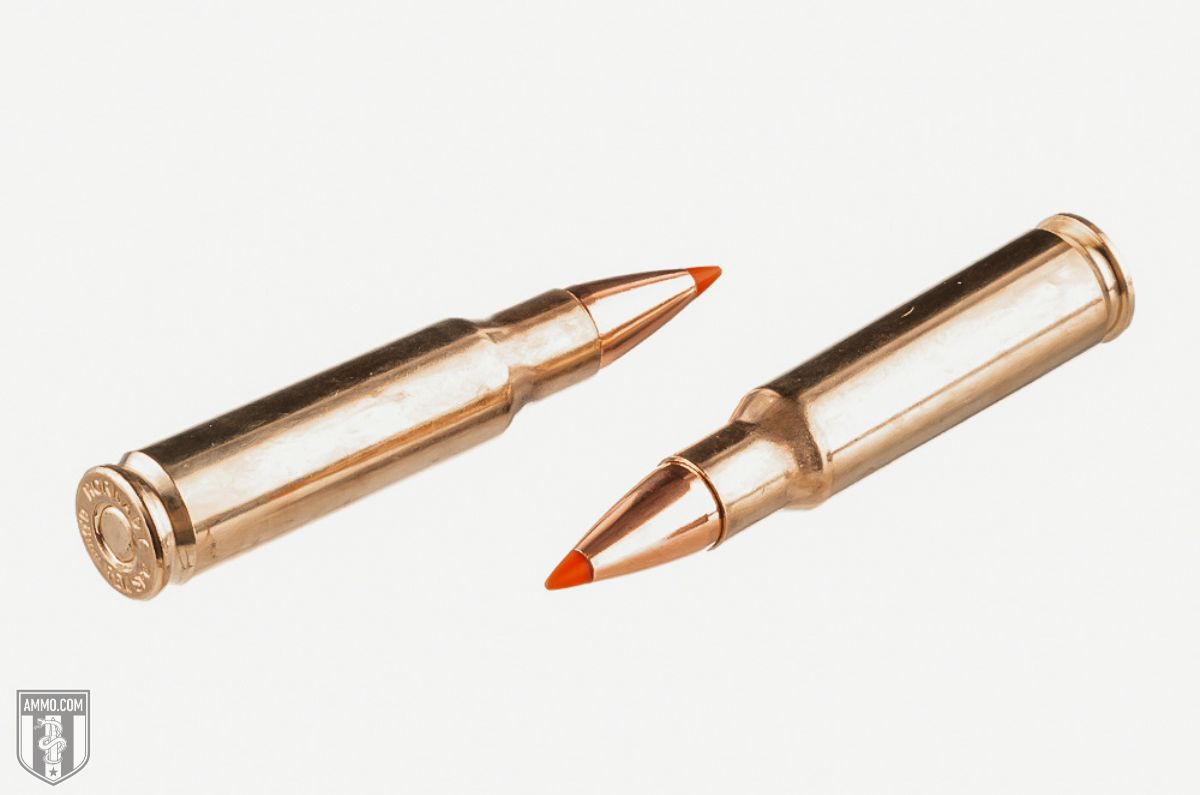6.8 Mm Cartridge - SIG Ammunition Produces and Ships Over 825,000 Rounds of 6.8x51mm Composite Case Ammunition for US Army Next Generation Squad Weapons Program Prototype Test #2
Last month, SIG Ammunition delivered 825,000 rounds of composite case 6.8x51mm ammunition to the US Army for Prototype Test #2 of the Next Generation Squad Weapons program. This is in addition to the initial deliveries that are part of the program and ammunition used for in-house development and testing. Together, it is estimated that the next generation of hybrid case ammunition will exceed 1 million rounds.
6.8 Mm Cartridge

The NGSW program replaced the 5.56mm M4 carbine and M249 squad automatic weapons with new squad-level rifles and automatic rifles in close combat formations such as infantry and cavalry scouts. Other services also monitor the program to determine whether to participate.
Not So Special: A Critical View Of The 6.8mm Spc The Firearm Blog
In addition to the ammunition mentioned above, the NGSW-AR light machine gun and the NGSW-R rifle, the program also includes a suppressor. They are also working on a dedicated fire prevention system with a team from another vendor.
The heart of this program is ammunition. The Army provided the industry with 6.8mm projectiles and performance specifications, but left it up to them how to deliver that projectile within the required performance parameters.
The performance they follow is similar to the 270 Win Short Mag. The velocities required to achieve the desired effect for a 6.8 mm projectile on a target require very high chamber pressures of over 80,000 psi. Never heard of small arms.
As it is not enough that the bullets of a larger caliber than replace it, it must be at least 20% lighter. The SIG ammunition hybrid design achieves its goal by being 23.5% lighter than the weight of an equivalent energy cartridge (270 WSM). Below you can see the hybrid casing next to all the traditional brass casing ammunition.
The Two German Sisters — Ron Spomer Outdoors
This is not a science project. The Army plans to select a solution next year. Engineering alone is a daunting task, but industry should be able to actually manufacture the ammunition and weapons it designs, if it so chooses.
The requirements led to some interesting solutions. From an initial pool of 16 industry groups offering different solutions, the Army narrowed it down to just three. General Dynamics-OTS has partnered with True Velocity to release a recyclable polymer casing cartridge. and Textron Systems using the Case Telescoped cartridge, which has a polymer casing that completely encloses the projectile and propellant similar to a rimless shotgun shell. This slide shows all the candidate systems.
SIG manufactures these bullets at its factory in Jacksonville, Arkansas. Last fall, I had the opportunity to check out their operation. During my tour, I witnessed the production of commercial ammunition as well as the .300 WinMag ammunition contracted by the US Army and new 6.8x51mm composite case ammunition for the NGSW program.

During our visit, we will highlight the manufacturing process of the composite case. May change slightly over time due to regular process and machine upgrades. For example, when cartridge cases were first created, SIG used a three-piece design with internal aluminum lock washers to hold the head and case together. In the cutaway below you can see the washers in the 3 piece design. Since then, they have refined it to a two-piece design that simplifies manufacturing and saves more weight and cost.
True Velocity's Composite Cased 6.8mm Cartridge, An Insight Of Future Ammo
The hybrid design not only reduces weight compared to conventional all-brass cased ammunition, but also provides additional benefits. Extra strength with a steel head if needed, but retaining a malleable brass case that is excellent for firing cycles. Shaping the brass case body the way they did also means it's more uniform and you get 200-300 feet per second extra muzzle velocity with the same load as a conventional all-brass case.
SIG Ammunition manufactures hybrid cases and complete rounds using the same type of machinery used to manufacture all brass case ammunition.
In this picture you can see the process of making the old all brass 5.56mm case which is the bottom set of pictures.
The hybrid case (case upper set) is a form in which the steel head is manufactured separately and the case body and head are combined in a press. Otherwise, the process is very similar to conventional base case ammunition.
Blackout: 300 Blk's Big Brother — Anachrobellum
While SIG is working on its own detonator, which still doesn't have a workaround, SIG will use commercial detonators and propellants combined with government-supplied projectiles to make 6.8x51mm series bullets.
Fear not Although these bullets are made for NGSW, SIG is willing to offer a commercial version called the 277 SIG FURY.
From the start of the NGSW program, SIG planned to make these bullets commercially available to consumers. During my visit, Jason Imhoff, SIG's head of ammunition engineering, said, "The idea that civilians wouldn't have access to a new military cartridge never crossed my mind."

They have gone through the process of bringing the new cartridge to the market since June 2019 in collaboration with the Sporting Arms and Ammunition Manufacturers' Institute (SAAMI), where SIG submitted drawings and rod information to the verification meeting of the ting - heat.
The 6.5x57 Mauser: A Cartridge Worth Discovering
Due to the high pressure in the round's chamber, the SIG had to work with SAAMI's Technical Working Group to develop a new certification procedure. Despite delays due to COVID, the Joint Technical Committee approved the technical data package.
277 SIG FURY will initially be offered as an option for the SIG cross bolt action rifle. In fact, the Cross was developed with the 277 SIG Fury load capacity. However, I wouldn't be surprised to see the upcoming MCX Spear, a heavier variant of the MCX developed for NGSW, sold in 277 SIG FURY.
Jason Imhoff also said that SIG has no plans to discontinue the .277 variant. He sees a 6.5 and possibly a .308 version of the SIG FURY that uses a hybrid casing for higher velocity. Who knows where they will go after that?
Prototype testing #2 of the Next Generation Squad Weapons Program has begun and the Army will soon determine which candidate systems to pursue. Meanwhile, SIG will continue to refine the hybrid bullet case technology and make it available to private and government customers.
Wts Early Auto Pistol Carts. Dormus Adler Mars Kolibri Ect
This entry was posted on Wednesday, January 27th, 2021 at 10:00 am and is filed under Advertiser, Ammo. You can follow all responses to this topic via the RSS 2.0 feed. Both comments and pings are currently closed.
42 Responses to "Over 825,000 rounds of 6.8x51mm composite casing ammunition manufactured and delivered by SIG ammunition for the Army's Next Generation Squad Weapons Program Prototype Test #2" The 6.8mm Remington Special Purpose Cartridge (6.8 SPC, 6.8. 8 SPC II or 4.8 SPC) is a rimless armored intermediate rifle cartridge developed by Remington Arms in collaboration with the US Army Marksmanship Corps and US Special Operations Command.
Replaced the 5.56 NATO cartridge in short barrel rifles (SBR) and carbines. Based on the .30 Remington cartridge,

The bore diameter is between 5.56 × 45mm NATO and 7.62 × 51mm NATO. It uses a bullet of the same diameter as a .270 Winchester hunting cartridge (usually not the same mass).
Mm Brass Blank Ammunition
The 6.8mm SPC cartridge was designed to address the ultimate ballistic deficiencies of the 5.56×45mm NATO cartridge and is currently used by the armed forces of all NATO allies.
The cartridges are the result of an improved rifle cartridge program. The 6.8 SPC (6.8×43mm) was originally developed by Sergeant Steve Holland and US Army Marksmanship gunsmith Chris Murray.
Compared to the 5.56 NATO/.223 Remington in the M16 Pattern Service Rifle, it provides superior downrange lethality with less loss of magazine capacity and less increase in recoil.
The program began its design with the .30 Remington case. This case has been modified in lgth to accommodate magazines for the M16 rifles and carbines currently used by the US Army.
What You Should Know About 8x57 Mm Mauser
In tests comparing different caliber bullets using .30 parts in Remington cases, Holland and Murray determined that the 6.5mm caliber projectile had the best accuracy and penetration. The mm projectile has the best terminal performance. The combination of cartridge, powder charge, and projectile easily outperformed the 7.62 × 39mm and 5.45 × 39mm Soviet rounds, and the new cartridge had a muzzle velocity of about 61 m/s (200 ft/s) faster than 7.62 x. 39.
The 6.8mm Remington SPC was designed to perform better in short-barreled CQB rifles after the M16A4 lost performance to the 5.56 NATO, which was changed from a rifled configuration to the newer M4 carbine. The 6.8 SPC delivers 44% more power than the 5.56mm NATO (M4 configuration) at 100–300 m (330–980 ft). 6.8mm SPC is not the same ballistics.
68 mm bottom bracket, mm 68, 68 caliber in mm, epson 68 ink cartridge, hp 68 ink cartridge, 68 mm to inches, 68 ink cartridge, sumiko pearl mm cartridge, epson 68 cartridge, 68 in to mm, mm cartridge, 68 mm ring size
0 Comments